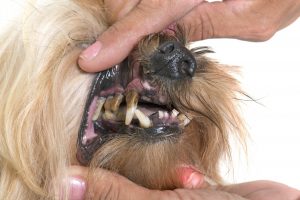Your vet has just recommended your beloved pet get some dental work. But what does that mean? And is it really necessary? We hope this answers some of your concerns.
When your pet is admitted for a dental procedure the following actions are taken:
- Their body weight is checked and they are settled into a hospital enclosure. If they’re nervous we try our best to reduce this by providing pheromone therapy and boxes to hide in.
- The vet then completes a pre-anaesthetic health check which includes a full physical exam and blood sampling where applicable. Pre-anaesthetic blood evaluation is strongly recommended for all animals undergoing an anaesthetic to identify any systemic issues and provide baseline values for future monitoring. Blood is collected from a vein in the neck with gentle restraint. A small patch of hair may be clipped at this site to facilitate blood collection.
- The animal is pre-medicated. This involves administering an injectable combination of drugs that usually includes pain relief and a sedative. Drug choice is catered to your individual pet’s health status (e.g. age, stress levels and pain levels).
- An intravenous port is placed in your pet’s leg (usually a front leg). We clip a patch for this also. This allows constant, unobstructed access to their blood supply for administration of fluids, drugs or emergency support. All our patients undergoing general anaesthetic receive intravenous fluids to ensure blood pressure support and kidney function assistance.
- Once we feel your pet is comfortably sedated they are provided with oxygen via a face mask. They are then given an induction agent which is a drug administered intravenously to anaesthetise them. Once they are asleep a tube is passed into their windpipe which is connected to an anaesthetic machine which provides oxygen and further gaseous anaesthetic.
- A vet nurse constantly monitors your pet whilst under anaesthetic including blood pressure checks, heart rate checks, respiration, oxygen saturation and depth of anaesthetic.
- Your pet then receives a thorough dental examination including probing and counting each tooth, identifying any abnormalities and in most cases a comprehensive set of dental xrays. This is crucial to ensure problems below the gumline are identified and resolved.
- All teeth that are identified as rotten, infected, wobbly or significantly damaged are extracted. In rare circumstances they may be left for specialist intervention (e.g. root canal). Teeth are extracted in a similar fashion to humans using drills and local anaesthetic. Extractions can take anywhere from 3 minutes to 3 hours so this is where your quote leaves room for complicated or more timely extractions.
- Tooth sockets are then flushed and in some instances closed using absorbable sutures (which will eventually fall out or be swallowed).
- All remaining teeth are given a thorough scale & polish then the mouth is washed out with an antiseptic rinse.
- The pet is then woken up. Our nurses monitor them carefully until they are sitting up and alert. At this point additional pain relief or antibiotics may be required. Intravenous fluids are left on until we are confident they have recovered smoothly.
- Your pet is then discharged later that day (or occasionally the next day) by a vet and a full dental report is provided. A free-of-charge recheck is recommended 5-7 days post dental work.
Frequently asked questions:
Whoah that’s more expensive than I anticipated! Why so much?
Yes dental work is costly! A lot of you may know that from your own dental experiences. But we firmly believe you get what you pay for and we want the best for your pet! We pride ourselves on our excellent standard of care and our staff endeavour to make your pet’s dental experience as smooth and pain-free as possible. We understand you might shop around which is why it is so important to outline what is involved in the dental procedure so you can question other vets on their protocols such as intravenous fluids, local anaesthetic and monitoring equipment. Talk to them carefully about what the procedure includes. If you have cost concerns please discuss it with us.
But my pet’s so old, what about the anaesthetic?
Remember age is not a disease! Of course older animals carry a slightly higher risk of mortality or morbidity from anaesthetic but luckily that risk is still very very low. With modern medicine, modern monitoring equipment and our extremely attentive and fast-acting staff we regularly and confidently anaesthetise senior pets. Of course any concurrent illnesses or issues should be discussed prior to the procedure and pre-anaesthetic blood monitoring is essential.
Can they manage with fewer teeth?
Domestic dogs and cats are easily able to cope with less teeth. Cats have 30 and dogs have 42 so they have plenty spare! If a tooth is infected or broken it can cause a significant amount of pain, thus the animal is usually better off without it. In fact owners quite often report their pet having a whole new lease on life once the infected teeth are removed. In some instances a full mouth extraction is performed and the animal lives a long happy life with no teeth at all.
But if they were in pain, how come they’re still eating?
Dogs and cats often mask symptoms of dental pain. Remember they must eat to survive so they have to have incredible pain or damage to stop them eating. Think about if you ever have had a tooth ache. Sore right? Often this pain is multiplied by 100 in pet’s mouths with significant dental disease! This is often evident when we are examining their mouths and they flinch when a tooth is touched. It’s amazing how many clients report a huge improvement in their pet’s demeanour following dental work.



